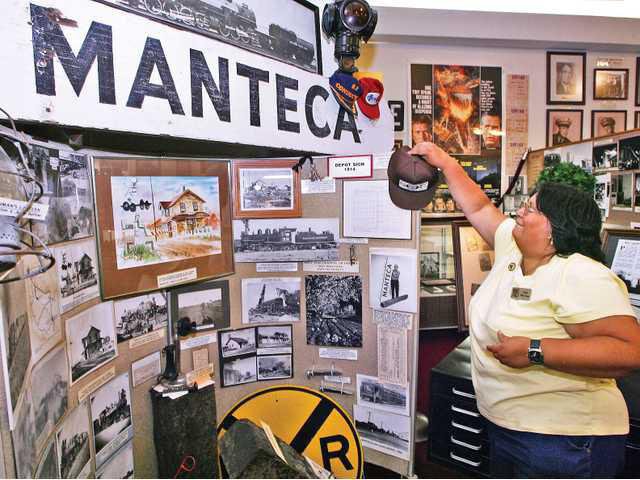How did the community that now encompasses the 95336 and 95337 ZIP codes come to be known as Manteca?
If you check shelves in grocery stores that have Armour Star containers of lard, the label’s flip side that’s in prominently Spanish says “manteca”?
Janice Zacharias reproduced a page of one of the history books — “Cities & Towns of San Joaquin County” penned by Raymond H. Hillman and Leonard A. Covello — that pokes holes in the railroad typo theory. There is a theory that has been handed down generation to generation that says the Southern Pacific Railroad in October of 1897 gave the community the name that has stuck for 122 years and counting because the name locals at the time wanted was “mantequilla” which is one of several Spanish names for butter or “manteiga” which is the Portuguese name for butter. The theory assumes the railroad shortened, butchered, or misspelled the name.
The authors doubt there was any local input to the name given the extensive number of dairies in the area that warranted a milk stop were devoid of Portuguese or Spanish dairymen at the time.
The authors contend the name Manteca came about because of Southern Pacific’s marketing strategy at the time to lure settlers westward to farm or move to growing cities was to apply idyllic sounding Spanish words when they could not just to stops along the railroad tracks but also for tract developments carved from the railroad’s massive land holdings.
That makes sense because manteca is used in Spanish to describe butter or lard. Mantequilla has only one meaning — butter — while manteca is listed as the word for “butter” or “fat” hence it being used to describe lard.
The need to rename the SP milk stop was because it was named Cowell Station after Manteca founder Joshua Cowell who introduced dairy farming to the area. There was a second Cowell Station farther south on the SP line named after Cowell’s brother Henry.
The story — or local legend — that said the name on railroad tickets for the stop was supposed to be “Monteca” but was misspelled by the railroad as “Manteca” has little credence if you research Spanish dictionaries as you cannot find the word “monteca.”
Although Mantequilla has a more pleasing and almost romantic sound to the ear the odds are SP employees who may have been playing off the reason the station existed in the first place to ship dairy products weren’t likely to go for the longer of the two words given not only would it have to appear on tickets but also signs and railroad maps.
That said manteca is more universally accepted as the word for lard in Spanish than it is for butter.
While it is likely that locals weren’t thrilled about the name and protested, it makes sense that the railroad didn’t change it.
That’s said the world has multiple towns and cities called San Francisco, San Jose, Los Angeles, San Diego, and Sacramento but only one named Manteca.
“Manteca” is also a fairly famous Afro-Cuban jazz tune co-written by Dizzy Gillespie in 1947 that big bands performed at Carnegie Hall in New York City.
It is also the name of an album produced by in 1958 by jazz pianist Red Garland. There is also a United Kingdom band named Manteca as well as a Canadian jazz fusion band that goes by the same name.
The Manteca Chamber of Commerce may be missing the boat by not trying to stage an event that builds on Manteca’s connection with jazz.
The Manteca Jazz Festival sounds like a sweet — like butter can be — swinging idea.
To contact Dennis Wyatt, email dwyatt@mantecabulletin.com





